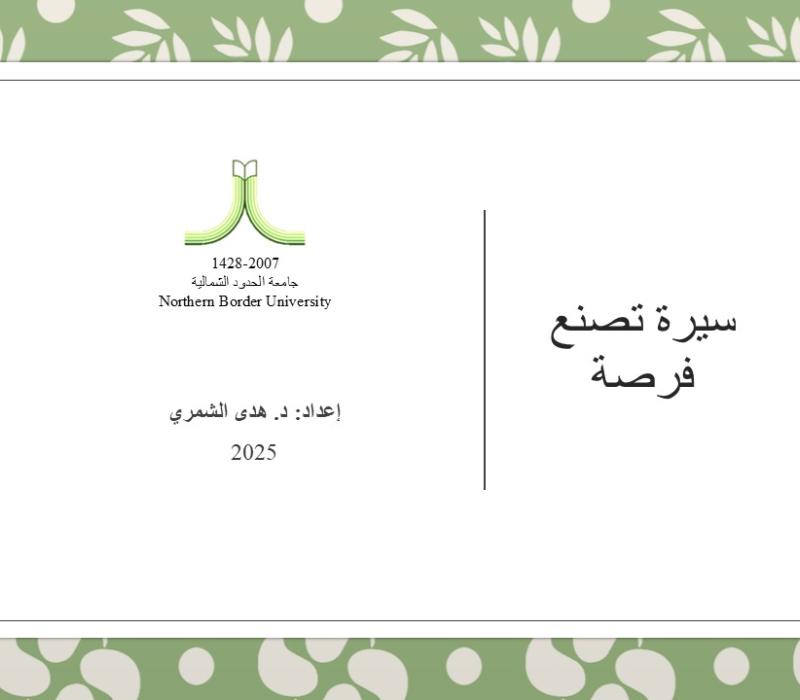تاريخ النشر 2023/8/1
تهدف هذه الخدمة الى تزويد الطالبات بالمهارات الأساسية لبناء سيرة ذاتية احترافية تعكس مؤهلاتهن وقدراتهن بالشكل الأمثل. فالسيرة الذاتية المتميزة تعد خطوة محورية لفتح فرص وظيفية افضل عند التقديم على...
نوع العضويه: عضو عامل
عضو باتحاد الكيميائيين العرب. عضو جمعية شباب الباحثين بالمركز القومي للبحوث المشهرة برقم 2311 – جمهورية مصر العربية. عضو الجمعية الكيميائية المصرية بالمركز القومي للبحوث – جمهورية مصر العربية. عضو جمعية الخدمات الاجتماعية للعاملين بوزارة القوى العاملة والهجرة ووحداتها . عضو جمعية الأمن والسلامة والصحة المهنية بوزارة القوي العاملة والهجرة.
عضو لجنة الدراسات العليا والبحث العلمي من 2020 حتي 2024 م رئيس لجنة الامن والسلامة بطلية العلوم 2021 حتي 2023 عضو اللجنة الاستشارية بكلية العلوم 1445هـ مدير مكتب التدريب الميداني 2021 حتي 2023 عضو لجنة تنفيذ مبادرة "إنشاء مكتب للتدريب وبرامج الأمتياز" وكود (3.2.1.1) بوكالة الجامعة للشؤون الاكاديمية من تاريخ 04/01/1442 إلي نهاية المبادرة. رئيس وحدة التدريب الميداني بالكلية بتاريخ 05/05/ 2021 مقرر بلجنة العلاقات العامة والإعلام بالكلية من تاريخ 05/04/2021 عضو لجنة الجودة والاعتماد الأكاديمي بالكلية من تاريخ 05/05/2021 عضو لجنة الجداول بالقسم من تاريخ 24/01/1443 عضو لجنة الخطط والبرامج الدراسية بالقسم من تاريخ 24/01/1443 عضو لجنة الجودة والاعتماد الأكاديمي بالقسم من تاريخ 24/01/1443 عضو لجنة...
دورة تدريبية بعنوان " استخدام أجهزة قياس المخاطر الميدانية والمعملية" بالمركز القومي للسلامة والصحة المهنية وتأمين بيئة العمل وذلك لمدة خمسة أيام في الفترة من 22/5/2004 حتي 26/5/2004 (40 ساعة تدريبية) دورة لغة إنجليزية تويفل ( TOEFL ) بمركز اللغة بمبنى ديوان محافظة الزقازيق التابع لمكتب الأمديست. دورة لغة إنجليزية ( EPEE ) بمركز اللغة بكلية الألسون بجامعة المنيا. حاصل على الرخصة الدولية لقيادة الحاسب الآلى ( ICDL ) بمكتب اليونسكو 13-Aug-2012 UN10195781 . طرق وأساليب التدريس بتاريخ 10/5/1429هـ بالاكاديمية الدولية للعلوم الصحية بالرياض. التخطيط للتدريس بتاريخ 10/5/1429هـ بالاكاديمية الدولية للعلوم الصحية بالرياض. مسارات المدرس الناجح بتاريخ 6/4/1429هـ بالاكاديمية الدولية للعلوم الصحية بالرياض...
الدورات التي تم تقديمها للمؤسسات الحكومية والأهلية: دورة تشريعات وأساسيات الأمن والسلامة والصحة المهنية. دورة تدريبية بعنوان الأمن والسلامة والصحة المهنية وتأمين بيئة . دورة تدريبية بعنوان البرنامج الشامل لسلامة والصحة المهنية. دورة بعنوان الأمن والسلامة وتأمين المنشآت من الحرائق والانفجارات. دورة الاوشا في إنذارات الحرائق المختلفة. دورة الاوشا في تقييم وتحليل مخاطر العمل. الاوشا في التشييد والبناء. دورة الاوشا في تعليمات السلامة للوقاية من مخاطر الكهرباء. دورة الاوشا في خطط الطوارئ ومسالك الهروب. دورة الاوشا في مخاطر الكهرباء وإغلاق مصادر الطاقة. دورة الاوشا في مخاطر المعدات والألات وحواجز الحماية. دورة الاوشا برنامج حماية القوي السمعية. دورة الاوشا في مهمات السلامة للوقاية الشخصية. دورة...
Pagination
- First page
- Previous page
- …
- 4
- 5
- 6
- 7
- 8
- 9
- 10
- 11
- 12
- …
- الصفحة التالية
- Last page
